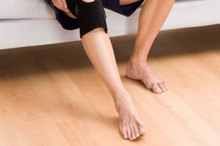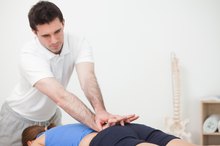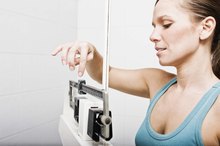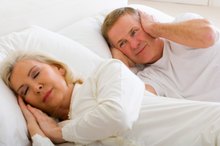Comparison of the Teeter Hang Ups F5000, F7000 and F9000 Inversion Tables
Inversion tables are tools used for inversion therapy. You hang upside down or lie inverted on a table to increase the space between your vertebrae. Theoretically, this reduces the stress on your intervertebral discs, relieving back pain.
Celeste Robb-Nicholson of Harvard Health Publications states that inversion therapy is not an effective, long-term solution for pack pain. However, it may provide temporary relief for some users. Teeter Hang Ups makes several inversion table products, including the F series.
Teeter Inversion Tables
Teeter Hang Ups makes in-home and commercial inversion tables.
The commercial line is designed for gyms, health care providers and professional sports teams. Teeter markets its in-home tables to help relieve back pain, increase joint health and assist in relaxation. The F series is a discontinued product line. You can still find the F9000, the latest model, for sale online, as of 2010. However the F5000 and F7000 are no longer available new.
- Teeter Hang Ups makes in-home and commercial inversion tables.
- Teeter markets its in-home tables to help relieve back pain, increase joint health and assist in relaxation.
F5000
Exercises to Increase Hip Size
Learn More
The Teeter F5000 inversion table was introduced to the market in 2004. It has a user weight limit of 300 lbs. and a maximum user height of 6 feet 6 inches. The Teeter F5000 is fairly lightweight at 62 lbs. It is 45 inches long, 28 inches wide and 58 inches long. The table is adjustable for individuals of different heights. You manually control the rotation of the table by redistributing your weight -- it works similar to a teeter totter. You can set the hinge to limit the responsiveness of the table. If you are a beginner, set the roller hinge for only partial inversion.
Advanced users can set the hinge for full inversion. The F5000 can be locked at a full 90 degree inversion.
- The Teeter F5000 inversion table was introduced to the market in 2004.
- You manually control the rotation of the table by redistributing your weight -- it works similar to a teeter totter.
F7000
The F7000 was introduced to the market one year after the F5000, in 2005. It is the same as the F5000 except it has three additional features. The EZ stretch traction handles allow you to increase the stretch while in an inverted position. The EZ angle tether strap offers three preset angles: 20, 40 and 60 degrees. This provides a simple way to gradually increase your angle. The F7000 also features corner feet that increase the footprint of the base, providing more stability to the table.
- The F7000 was introduced to the market one year after the F5000, in 2005.
- The F7000 also features corner feet that increase the footprint of the base, providing more stability to the table.
F9000
Comparison of the ProForm XP550E & XP550S
Learn More
The F9000 was introduced to the market in 2008. It is the same as the F7000 with a couple of exceptions. The F9000 does not have the EZ traction handles. It does offer a new feature that makes it easier for you to lock the ankle clamps. Open or close the clamps with the push of a button.
On the F5000 and F7000 models, you had to lean down and manually clamp the ankle locks. With the F9000, use the EZ reach handle to lock the ankle clamps without reaching down to your feet.
- The F9000 was introduced to the market in 2008.
- On the F5000 and F7000 models, you had to lean down and manually clamp the ankle locks.
Related Articles
References
- Harvard Health Publications: Upside Down for Back Pain
- Chronic Back Pain. Health Policy Institute. https://hpi.georgetown.edu/backpain/. Published February 13, 2019.
- Wegner I, Widyahening IS, Van tulder MW, et al. Traction for low-back pain with or without sciatica. Cochrane Database Syst Rev. 2013;(8):CD003010. doi:10.1002/14651858.CD003010.pub5
- McMonnies CW. Intraocular pressure and glaucoma: Is physical exercise beneficial or a risk?. J Optom. 2016;9(3):139–147. doi:10.1016/j.optom.2015.12.001
- Chronic Back Pain. Health Policy Institute. Published February 13, 2019.
- Kong L, Tian W, Cao P, Wang H, Zhang B, Shen Y. Predictive factors associated with neck pain in patients with cervical disc degeneration: A cross-sectional study focusing on Modic changes. Medicine (Baltimore). 2017;96(43):e8447. doi:10.1097/MD.0000000000008447
Writer Bio
Based in Austin, Texas, Jolie Johnson has been in the fitness industry for over 12 years and has been writing fitness-related articles since 2008 for various websites. She received her Bachelor of Arts in English and philosophy from the University of Illinois.









